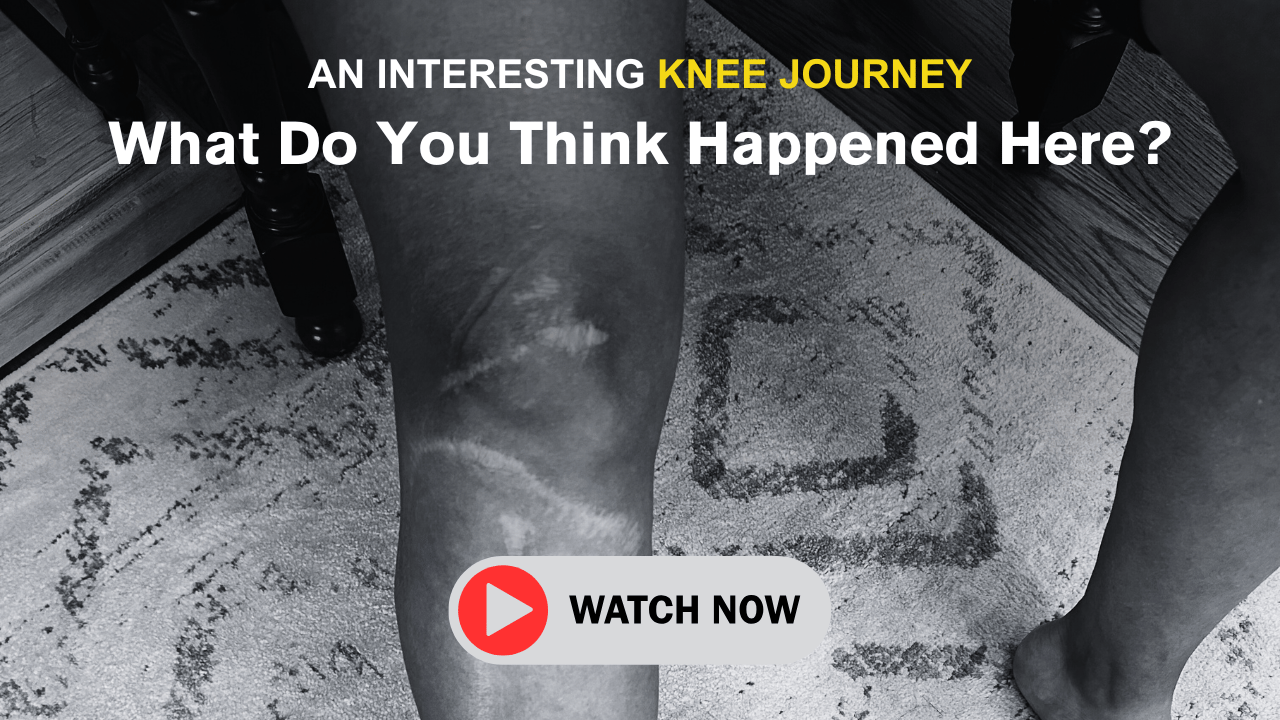- KneeMail
- Posts
- 👀 A Real Case That Changed My Clinical Approach to Knee Rehab
👀 A Real Case That Changed My Clinical Approach to Knee Rehab
How a common complaint during exercise became a critical insight for preventive knee care and long-term joint health.

TODAY’S KNEE NEWS
A Crazy Knee Story!
From Multiple Surgeries in Her 20s to Avoiding Knee Replacement Surgery in Her 50s: Here’s How
How a common complaint during exercise became a critical insight for preventive knee care and long-term joint health.
Her knee journey started with a scooter crash at age 24. What followed? Multiple surgeries. A busy life. And then, years later, pain that crept back in during long hikes, treadmill workouts, and eventually… pickleball.
Pickleball, yard work, even walking—her knee felt everything. But instead of giving in, she found a way forward. One that didn’t involve another knee surgery.
In this short post, she shares three things she stopped doing, two habits that made the biggest difference, and why she believes your knee journey deserves better than “just wait until it gets worse.”
From PT Dr. David Middaugh: 3 Easy Exercises That Help Repair Knee Cartilage
Physical therapist David Middaugh breaks knee-cartilage rehab down to three zero-equipment moves you can start right now.
Exercise #1: Tailgate Swings (2:59)
Let your legs dangle and gently glide for 5-10 minutes; the rhythmic motion circulates synovial fluid so cartilage gets the nutrients blood alone can’t deliver.
Exercise #2: Clamshells (5:20)
On your side to fire the glute muscles that steady the thigh and keep excess force off the joint.
Exercise #3: Modified Bridge (7:15)
Flatten your back, squeeze your glutes, lift your hips an inch, and hold—building the posterior-chain strength that realigns the knee.
Best Practices From Dr. Middaugh
Middaugh suggests doing the swings several times a day and pairing the strength moves for 10-second holds, 10 reps, two to three sessions daily. Done consistently, this mini-routine sets the stage for more advanced training.
Click Here to watch the curated 2:22-to-11:45 clip above to master these 3 knee-cartilage exercises and feel the difference in your recovery.
Topical Ointments for Knee Pain: A Safer, Proven Option for Arthritis Relief
If capsules like ibuprofen upset your stomach or raise your blood pressure, you’re not alone. Many people with knee arthritis can’t tolerate oral non-steroidal anti-inflammatory drugs (NSAIDs), but that doesn’t mean you’re out of options.
Topical NSAIDs deliver anti-inflammatory relief directly to the knee joint, with far less impact on the rest of your body. That means less risk to your stomach, heart, or kidneys, especially important for older adults.
Research shows topical NSAIDs reduce pain and improve movement just as well as pills during the first few weeks. That’s why major medical guidelines now recommend starting with a topical NSAID before reaching for oral meds.
Want To Dive Deeper?
Learn how topical NSAIDs work, how to apply them correctly, and what the latest research says about their safety and effectiveness.
Bonus: The blog includes links to clinical studies if you're curious about the science behind the results.
KNEE FACTS
Q: Did you know your kneecap is basically free-floating?
A: Your kneecap floats in a sea of tendons and muscles.
The kneecap (patella) isn’t directly attached to bone like most other parts of the skeleton. Instead, it sits embedded in the quadriceps tendon and is held in place by soft tissue and muscle action. It "glides" over the femur as you move, like a pulley system, enhancing your leg strength and efficiency.

Reply